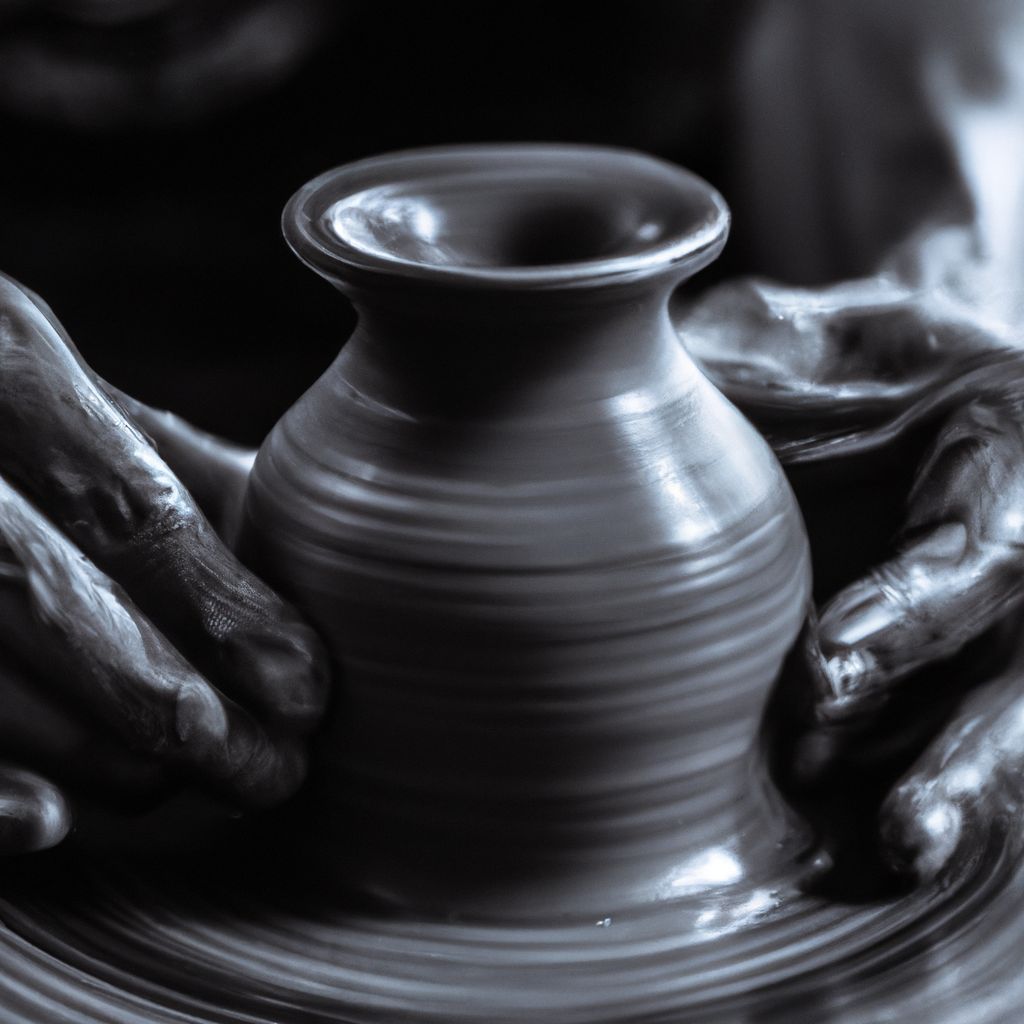Pottery has been an integral part of human culture and expression for thousands of years. Its versatility and tactile nature make it a rewarding and therapeutic art form. Whether you are a beginner or an experienced potter, there are endless ways to unleash your creativity and improve your skills. This guide will provide you with an overview of pottery techniques, tools, and resources to help you embark on your journey from clay to creation.
Understanding Clay and Its Properties
Before you dive into the world of pottery, it's essential to understand the properties of clay. Clay is a natural, earthy material made up of fine-grained minerals. Its plasticity allows it to be molded and shaped, while its high moisture content makes it workable. As clay dries, it becomes more rigid and brittle, making it essential to work with it in its optimal state. When clay is fired in a kiln, its properties change at a molecular level, turning it into a hard, durable ceramic material.

Choosing the Right Clay
There are various types of clay available, each with its unique properties and suitability for different pottery techniques. Some common types of clay include:
- Earthenware: Low-firing and porous, often used for decorative pieces and planters.
- Stoneware: High-firing and durable, ideal for functional items such as dinnerware.
- Porcelain: Fine-grained and translucent, suitable for delicate and intricate pieces.
- Raku: Designed for the unique Japanese raku firing technique, which results in striking, unpredictable glaze effects.
When choosing your clay, consider factors such as firing temperature, workability, and desired end product. Experimenting with different types of clay will help you discover your preferences and style.
Essential Pottery Tools
As you delve into pottery, you'll quickly discover the variety of tools available to shape, carve, and refine your creations. Some essential tools to start with include:
- Potter's wheel: A rotating platform used for throwing and forming symmetrical shapes.
- Wire cutter: A tool with a thin wire used to cut clay from a larger block or separate a finished piece from the wheel.
- Ribs: Flat, flexible tools used to shape and smooth the surface of your pottery.
- Needle tool: A sharp, pointed tool used to trim, carve, and pierce clay.
- Loop tool: A tool with a looped metal end for carving and hollowing out clay.
- Fettling knife: A thin, flexible knife used for cutting, trimming, and scraping clay.
- Slip and scoring tools: Brushes, combs, and other tools used to apply slip and score clay surfaces for joining pieces together.

Basic Pottery Techniques
There are several fundamental pottery techniques to explore as you develop your skills. These techniques include:
Hand-building: Creating pottery using only your hands and simple tools. This technique encompasses methods such as pinching, coiling, and slab building.
Throwing: The process of shaping clay on a potter's wheel. This technique is used to create symmetrical, round forms such as bowls, plates, and vases.
Slip casting: A technique that involves pouring liquid clay, or slip, into a plaster mold. This method is particularly useful for creating multiple identical pieces or intricate shapes that are difficult to achieve by hand.
As you gain experience, you may wish to experiment with advanced techniques such as sgraffito, inlay, and glaze layering to add depth, texture, and color to your pottery.
Firing and Glazing
Once your pottery has been shaped and dried, it's time for the firing process. Firing in a kiln turns the clay into a hard, durable ceramic material. The first firing, called bisque firing, removes any remaining moisture and prepares the pottery for glazing. After applying the glaze, a second firing, called glaze firing, is required to achieve the desired finish.
Glazes come in a variety of colors, finishes, and formulas. They can be matte, glossy, textured, or even crystalline. Experimenting with different glazes and application techniques will help you develop your unique style and create captivating pottery pieces.

Resources for Learning and Inspiration
Continuing to learn and find inspiration is crucial for growth as a potter. Here are some resources to help you on your journey:
- Books: Many instructional books and guides cover various pottery techniques, history, and styles.
- Workshops and classes: Local art centers and pottery studios often offer hands-on classes and workshops for all skill levels.
- Online tutorials: YouTube channels, pottery blogs, and social media accounts can provide valuable tips, demonstrations, and inspiration.
- Art galleries and museums: Visiting galleries and museums can expose you to various pottery styles and historical periods, sparking your creativity.
As you explore the world of pottery, remember that practice and experimentation are key to developing your skills and unleashing your creativity. Embrace the process, and enjoy the journey from clay to creation.

